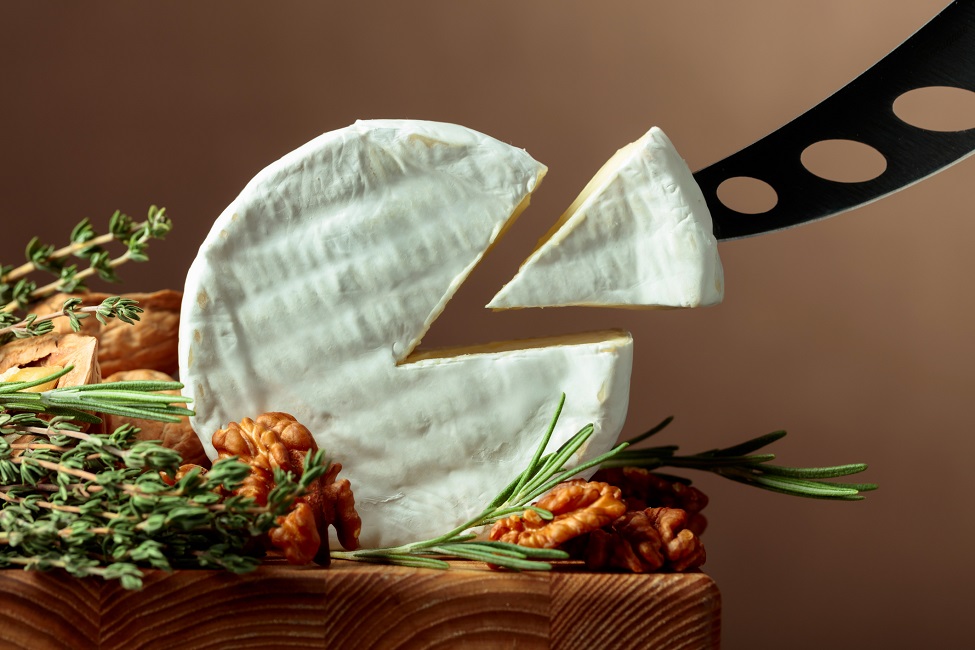The keto diet has become one of the most popular ways to shed pounds, improve energy, and boost mental clarity. However, for those with a sweet tooth, the thought of giving up dessert can seem like a significant sacrifice. But here’s the good news: You can have dessert on a keto diet! In fact, keto desserts are not only possible, but they can be incredibly delicious and satisfying. In this comprehensive guide, we’ll dive deep into the world of keto desserts, from what they are and how to make them, to answering common questions about indulging in sweet treats while maintaining ketosis.
What Are Keto Desserts?
Keto desserts are sweet treats made specifically to fit within the parameters of the ketogenic diet. The keto diet is a low-carb, high-fat eating plan designed to put your body in a state of ketosis, where it burns fat for fuel instead of carbohydrates. To stay in ketosis, most people on keto limit their carbohydrate intake to around 20-50 grams per day.
Traditional desserts, such as cakes, cookies, and ice cream, are loaded with sugar and high-carb ingredients like flour, making them off-limits for keto dieters. However, keto desserts substitute these ingredients with low-carb alternatives, allowing you to enjoy dessert without knocking yourself out of ketosis. They are typically sweetened with sugar-free sweeteners like stevia or erythritol and use low-carb flours like almond or coconut flour.
Can You Have Dessert on Keto?
Yes, you can absolutely have dessert on keto! The key is making or choosing desserts that adhere to the keto diet’s low-carb, high-fat guidelines. Traditional desserts rely heavily on sugar and flour, both of which are high in carbohydrates. However, by using keto-friendly ingredients such as alternative sweeteners and low-carb flours, you can create or find desserts that are satisfying and won’t derail your diet.
The key to success on a keto diet is balance and planning. Keto desserts allow you to enjoy sweet flavors while keeping your carb intake low. It’s essential to note, however, that not all sugar-free or low-carb desserts are necessarily keto-friendly, so it’s important to read labels or make your own desserts to ensure they fit within the keto guidelines.
What Ingredients Are Used in Keto Desserts?
To make delicious keto desserts, it’s essential to stock your pantry with the right ingredients. Here’s a rundown of the most common components found in keto-friendly sweets:
1. Low-Carb Sweeteners
Traditional desserts rely heavily on sugar for sweetness, but keto desserts use sugar-free, low-carb sweeteners. Here are the most popular sweeteners used in keto desserts:
- Stevia: A natural sweetener extracted from the stevia plant. It’s incredibly sweet and often used in conjunction with other sweeteners to avoid a bitter aftertaste.
- Erythritol: A sugar alcohol that provides sweetness without the carbs or calories. It’s a popular choice for keto baking and can be used cup-for-cup as a sugar replacement.
- Monk Fruit Sweetener: Another natural, zero-carb sweetener derived from the monk fruit. It’s sweeter than sugar and often blended with erythritol for balance.
- Allulose: A low-calorie sweetener that tastes and behaves much like sugar but doesn’t affect blood sugar levels. It’s perfect for keto desserts as it caramelizes and browns like sugar.
2. Low-Carb Flours
Since regular wheat flour is off-limits on keto, low-carb flours are used to create the right texture for cakes, cookies, and other baked goods. Common low-carb flours include:
- Almond Flour: Made from ground almonds, this is one of the most popular low-carb flours. It’s great for baking cookies, cakes, and even pie crusts.
- Coconut Flour: This flour is made from dried coconut meat and is highly absorbent, so you only need a small amount in recipes. It’s often used in combination with almond flour.
- Psyllium Husk: A fiber-rich ingredient that can be used to add structure to keto bread and baked goods.
- Flaxseed Meal: Ground flaxseeds add texture and a slight nutty flavor to baked goods and can also be used as an egg replacement in vegan recipes.
3. High-Fat Dairy and Coconut Products
The keto diet encourages high fat intake, so many keto desserts incorporate rich ingredients like heavy cream, butter, cream cheese, and coconut milk. These ingredients not only add a creamy texture to desserts but also help keep you in ketosis by providing healthy fats.
4. Nuts and Seeds
Nuts and seeds add crunch, texture, and flavor to keto desserts. Almonds, pecans, walnuts, chia seeds, and flaxseeds are all commonly used in keto recipes. They also provide healthy fats, fiber, and protein.
5. Unsweetened Cocoa Powder
For chocolate lovers, unsweetened cocoa powder is a staple in keto desserts. It’s low in carbs and full of rich chocolate flavor, making it perfect for brownies, cakes, and chocolate mousse.
How to Make Keto Desserts
Creating keto desserts at home allows you to control the ingredients and customize the flavor to your liking. Here’s a step-by-step guide to making your own keto-friendly sweets:
1. Choose a Recipe
Start with a tried-and-true keto dessert recipe. Whether you’re in the mood for a keto cheesecake, brownies, or cookies, there are plenty of keto dessert recipes available online or in keto cookbooks.
2. Gather Your Ingredients
Make sure you have all the necessary keto-friendly ingredients on hand. This might include almond flour, erythritol, unsweetened cocoa powder, eggs, butter, and heavy cream.
3. Substitute Sugar and Flour
Replace high-carb ingredients like sugar and flour with low-carb alternatives. For example, use erythritol or stevia instead of sugar, and almond or coconut flour instead of wheat flour. Keep in mind that coconut flour is more absorbent than almond flour, so you’ll need less of it in your recipes.
4. Adjust for Sweetness
Keto sweeteners can vary in sweetness levels, so it’s essential to taste your batter or filling before baking. Some sweeteners, like stevia, are much sweeter than sugar, so you’ll need to use less of them.
5. Bake or Chill
Once your dessert is prepared, bake it according to the recipe instructions. Many keto desserts can also be made as no-bake treats, which require chilling in the refrigerator rather than baking.
6. Enjoy in Moderation
While keto desserts are low in carbs, they are still high in calories and fats, so it’s important to enjoy them in moderation. A small slice of keto cheesecake or a couple of keto cookies can satisfy your sweet tooth without derailing your diet.
YOU MAY ALSO LIKE : Keto-Friendly Fruits
Popular Types of Keto Desserts
There are endless options when it comes to keto desserts. Here are some of the most popular types:
1. Keto Cheesecake
Keto cheesecake is a rich, creamy dessert made with cream cheese, eggs, and a low-carb sweetener. The crust is typically made from almond flour or crushed nuts. Cheesecake can be topped with fresh berries, sugar-free chocolate syrup, or whipped cream for added flavor.
2. Keto Brownies
Keto brownies are fudgy, chocolatey, and incredibly satisfying. They’re made with almond or coconut flour, unsweetened cocoa powder, and a low-carb sweetener like erythritol. Adding ingredients like sugar-free chocolate chips or nuts can take your brownies to the next level.
3. Keto Cookies
From chocolate chip to peanut butter, there’s a keto cookie recipe for every craving. These cookies are typically made with almond or coconut flour and sweetened with stevia or erythritol. They bake up crispy on the edges and soft in the center, just like traditional cookies.
4. Keto Fat Bombs
Fat bombs are small, high-fat treats that are perfect for snacking on the keto diet. They’re often made from ingredients like cream cheese, coconut oil, and nut butter. You can flavor fat bombs with cocoa powder, vanilla extract, or spices like cinnamon to create a delicious, keto-friendly snack.
5. Keto Ice Cream
Yes, you can still enjoy ice cream on a keto diet! Keto ice cream is typically made with heavy cream, egg yolks, and a low-carb sweetener like erythritol or stevia. The result is a rich, creamy dessert that’s perfect for a hot day or a post-dinner treat.
6. Keto Pies and Tarts
Keto pies and tarts feature a buttery almond flour crust and a variety of fillings, such as sugar-free lemon curd, chocolate ganache, or whipped cream. These desserts are perfect for holidays or special occasions.
How to Enjoy Keto Desserts Without Ruining Your Diet
While keto desserts can be a great way to satisfy your sweet tooth, it’s important to keep a few things in mind to ensure you don’t go overboard:
1. Watch Your Portions
Even though keto desserts are low in carbs, they can still be calorie-dense. Be mindful of portion sizes to avoid overeating, which can lead to weight gain, even on a keto diet.
2. Pay Attention to Your Macros
Keep track of your daily macronutrient intake, including carbs, fats, and protein. This will help you ensure that your keto dessert fits into your overall plan for the day.
3. Stick to Whole Foods
While keto desserts can be a fun way to indulge, remember that the foundation of the keto diet is whole, nutrient-dense foods. Focus on eating plenty of healthy fats, lean proteins, and low-carb vegetables in addition to your desserts.
Final Thoughts
Keto desserts offer a fantastic way to indulge in sweet treats without sacrificing your health goals. Whether you’re a fan of brownies, cheesecake, or cookies, there’s a keto version out there for you. By using low-carb sweeteners, flours, and high-fat ingredients, you can create delicious, satisfying desserts that won’t kick you out of ketosis.
Remember, moderation is key, and while keto desserts are a great option, they should still be part of a balanced diet rich in whole, unprocessed foods. Happy baking!


